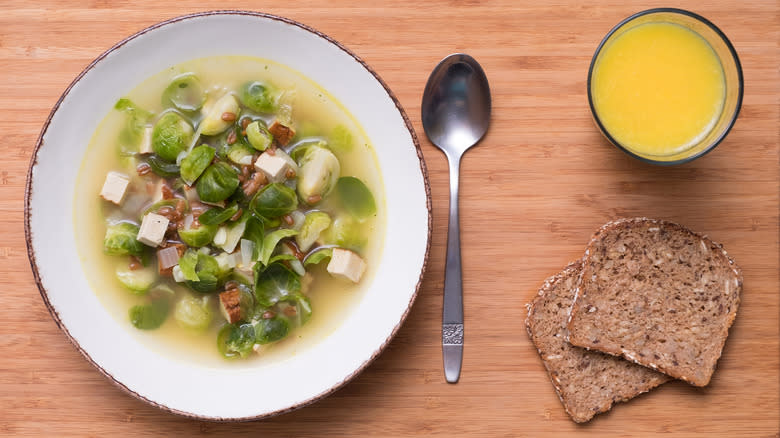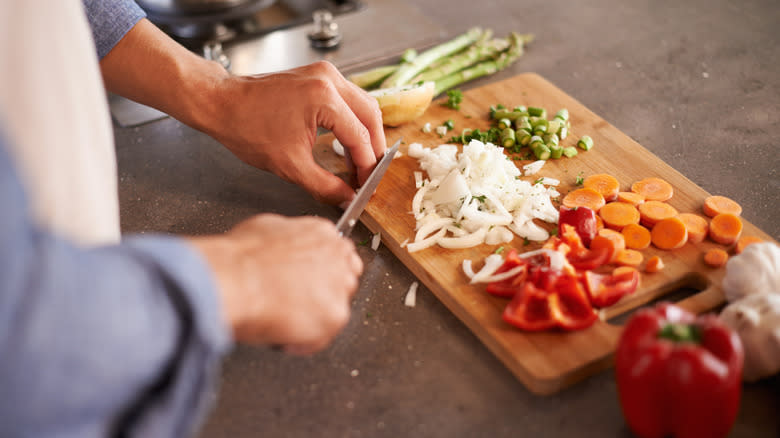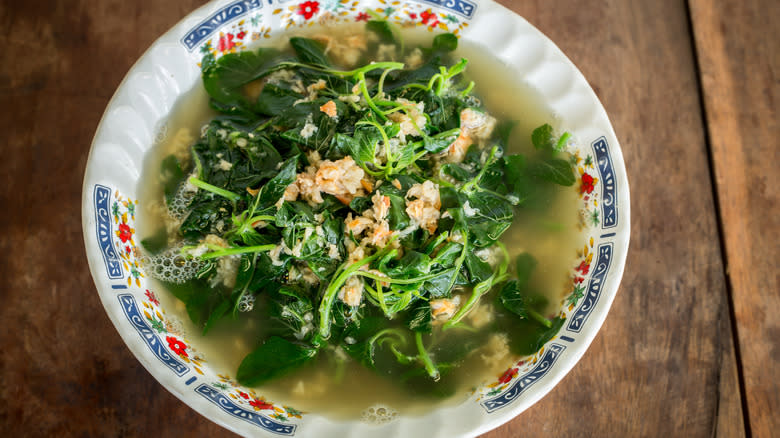For Perfectly Sized Veggies For Your Soup, Use This Chopping Tip

You don't need to be a chef to make soup, you don't even need a recipe as long as you have good ingredients and an idea of what you're trying to make. After all, this comforting meal is just yummy flavors mixed with some broth so that it can be slurped. It is helpful to have some decent knife skills for soup making, though, because you want all of the vegetables to be around the same size so that they cook at the same rate.
However, the proper size of your dish's ingredients isn't always obvious. If you're stumped as to how to properly cut your mirepoix, always keep the spoon rule in mind. That is, cut everything into a size that fits nicely on a spoon. After all, it's the kitchen tool of choice for serving up homestyle chicken noodle soup, so if the veggies don't fit on a serving spoon they've got no business being in the broth in the first place.
Read more: 12 Vegetables And Fruits That Used To Look Very Different
Use A Brunoise Cut For Soup

Unless you work in a professional kitchen, there's not usually a lot of sense in memorizing the names of the most common knife cuts. Directions to cut things into strips or cubes are usually good enough to get a home recipe on the table. But there is a method to the madness of naming different cuts, of course, which is uniformity.
In commercial kitchens, the same recipes are made day after day and customers expect the food to look and taste the same every time they visit, so it makes sense that there should be an agreed-upon classification of vegetable cuts. This way you can ask any cook to chiffonade basil or julienne potatoes and you'll get the same results every time. So while it's not necessary to commit all the different knife cuts to memory at home, it's helpful to learn the basics if you cook with a lot of vegetables. That way you can get the same recipe results again and again.
When you're making soup, the perfect type to shoot for with vegetables is usually a brunoise cut. This is 1/8-inch cubes, or about half the size of a regular green pea, which is just right for picking up with spoons. A standard soup spoon holds about a tablespoon of food, so you can get a variety of ingredients in one bite if you cut everything into a basic brunoise.
Don't Neglect To Cut The Greens Or Protein For Soup

Once you commit the name of the cut to memory you'll start to notice that many soup recipes call for a brunoise, even if they don't use the proper term in the directions. Sometimes it's referred to as small dice or just 1/8-inch pieces. Other components can be bigger, however, don't forget that everything else also has to fit into spoon-sized bites. Leafy bits like kale, chard, and spinach can get pretty unruly when they're swimming in a hot broth, so be sure to chop them up into at least 1/2-inch pieces before they go into the pot.
The same is true for protein, like tofu, chicken, and beef. Most soups aren't eaten with a knife and fork so you want to make sure nobody gets bites any bigger than they can chew in one mouthful. Small cubes will also create a lot of variety in your spoon as you eat and whether you're eating acorn squash soup or zucchini ricotta, it's always nice to taste a little bit of everything with every bite of your homemade meal.
Read the original article on Daily Meal

